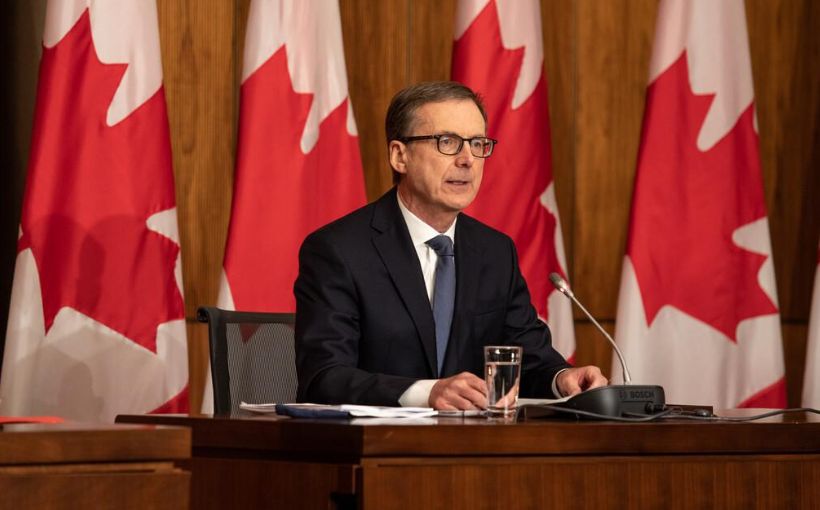
Inflation Drop Sparks Optimism Over Rate Cuts
An unexpected drop in Canadian inflation in February has sparked optimism over a mid-year interest-rate cut.
Annual inflation fell to 2.8% in February, Statistics Canada reported Tuesday. The decline caught analysts and markets off guard.
Analysts had been expecting an increase to 3.1%. The Bank of Canada adopted a more dovish stance on interest-rate cuts earlier this year after taking a hard-line approach for most of the past two years.
BoC Governor Tiff Macklem has indicated that cuts are just a matter of time, but predictions on the timing have varied.
“It’s difficult to poke any holes in this [inflation] report,” BMO Capital Markets Chief Economist wrote in a research note excerpted in the Globe and Mail. “We’re not the only analysts caught by surprise at how modest these inflation rates of the past two months have been (and especially in contrast to the high-side and sticky readings in the U.S.)”
Porter noted that the BoC had projected first-quarter inflation of 3.2% in its January report. But Porter believes an April cut will be too early. BMO continues to call for rate cuts to begin in June.
“The softness of the domestic economy and increasing slack driven by higher rates is helping put downward pressure on inflation, just as the BoC intended,” he wrote. “At a minimum for April, look for the Bank to open the door to rate cuts.”
Other analysts also predicted that cuts will begin in June, but Toronto Dominion Bank expects the BoC to wait until July.
“February’s inflation report was a little bit of good news for Canadians,” wrote Leslie Preston, a TD senior economist in a research note that the bank provided to Connect. “After stalling through the second half of last year, that is two months of improvement on the Bank of Canada’s key core inflation gauges. However, the battle isn’t won yet.”
In a separate forecast issued Tuesday, TD said the BoC has been “white knuckling it a bit” as it hods tight to its 2% inflation target in the face of U.S. economic resilience while Canada’s economy “continues to sputter.”
“We expect that inflation will have cooled enough by July for them to loosen up with a first interest-rate cut,” said TD.
David Doyle, head of economics at Macquarie, is also forecasting a July rate cut. Shelter costs, which analysts have cited as a key driver of rising consumer costs, remained a counterweight to the inflation decline, David Yu, chief economist at Central 1 credit union, noted n a report excerpted in the Globe.
Excluding shelter-cost increases, which have largely resulted from higher interest rates, inflation has come down to 1.3%, giving the BoC further motivation to introduce cuts, he contended.
“Shelter remains a challenge, but lower interest rates will further ease inflation and population driven demand (alongside supply constraints) are outside the Bank’s control, meaning it will need to look through this driver,” he wrote.
In contrast to their peers, Monex analysts Simon Harvey and Nick Rees contended in a research note, also excerpted in the Globe, that the BoC now has sufficient cause to start curbing interest rates in April.
But Harvey and Rees anticipate that the BoC will wait for the federal government’s March labour report and a third consecutive month of lower inflation before acting.
“For the Bank of Canada, there remained much to ponder as it looks to timing of a rate cut but we think it should be soon,” wrote Central 1’s Yu.
- ◦Sale/Acquisition
- ◦Development
- ◦Financing
- ◦Economy
- ◦Policy/Gov't

